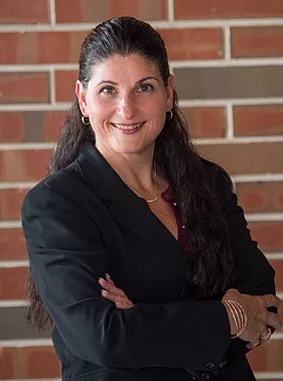What is the role of a Guardian Ad Litem in a legal case?
A GAL is the eyes and ears for the court, sometimes referred to as the “super parent” of the child. The role of the GAL in court proceedings is distinct because the GAL is the only party mandated to advocate solely for the child’s best interests. This may not necessarily be what the child wants, which is where an Attorney Ad Litem is required.
The court orders the actual tasks for the GAL, as to what the investigation issues are:
- Time-sharin
- Parental responsibility
- Abuse allegations
- Alienation
- etc.
They may inspect and copy records or documents relating to the child or child’s parents and use this information in the Report and Recommendation filed with the court. Courts are never bound by a GAL report but use them for guidance as is deemed appropriate on a case-by-case basis.
What types of cases involve Guardian Ad Litems?
A GAL is assigned in most dependency law cases if the court finds it in the child’s best interest, and ALWAYS in Termination of Parental Rights matters and sexual abuse cases. GALs are used for cases involving children including divorce cases, paternity, child victims in criminal or personal injury cases, guardianships, or dependency cases. The court, not the individual parties, appoints a GAL for a case. Legal Aid will reach out to GAL volunteers and ask them to take a case.
Allegations of child abuse, abandonment, or neglect as defined in s. 39.01 must be verified and determined by the court to be well-founded for the court to appoint a GAL for the child. Dissolution of marriage cases do not require a GAL appointment unless there is a companion dependency case.
Dual appointments of a GAL may be implemented when criminal proceedings or domestic relations proceeds are related. This is deemed logical and efficient since the goal of the child’s best interest will be the same in all cases.

What is the typical length of time that a Guardian Ad Litem serves in a case?
Some appointments can be for a few months, others are for years. It is all fact and case specific. A GAL is appointed by the court at the earliest possible time to represent the child. Their representation of a child begins only after the judge who is presiding over the case issues an order of appointment, and the GAL has authority to act only as long as the court retains jurisdiction. If jurisdiction is lost by the court, the GALs authority to take action in the case is also removed.
When continuing jurisdiction is obtained, and judicial review of the case ends, a GAL will seek discharge. A motion or notice of discharge occurs when:
- the GAL does not have adequate resources to accept appointment of a case
- the GAL has a conflict of interest which has not been waived
- a child has turned 18 years of age, unless jurisdiction is extended
- the Department of Children and Families has received authorization from the court to terminate its supervision with a child and family
From the date of appointment until the date of discharge, the guardian ad litem shall be a party to any judicial proceeding. Representation of or advocacy for children before the court appointment is prohibited until there is oral appointment or a written Order Appointing Guardian ad Litem.
Can a Guardian Ad Litem be removed from a case?
Conflicts of interest for a GAL should be avoided but can cause a need for discharge, removal, or replacement. There is a 30 day limit for discharge. A notice must be filed with the court stating the statutory obligations and explaining why the GAL cannot fulfill them. If the court denies a motion for discharge, a dated, signed, and written notation is required for the case file.

Conflicts of interest can include:
- simultaneously representing a minor parent and that minor’s child(ren)
- representing a minor child where the GAL previously represented the minor child’s parent and the information from the representation of the parent could now be used to the disadvantage of the parent
- representing 2 or more children where the interests of any child are incompatible with or in any way contrary to the interests of another
- circumstances which would compromise the GALs ability to provide independent advocacy for the best interests of a child
How does a Guardian Ad Litem interact with the parties involved in the case?
Each GAL has their own process regarding interacting with the parties involved in the case. Children often prefer to meet in person, but it all depends on the family, the facts and the location of the parties. Our founding attorney, Camy B. Schwam-Wilcox, likes to meet witnesses in person or via Zoom.
A GAL is appointed by the court at the earliest possible time to represent the child. GALs do not disclose or participate in disclosing any information relating to an appointed case to any person who is not a party to the case. Reports to the court and as provided by law or court order are the exception.
Regardless of the type of proceeding or proceedings, the purpose is always to represent the best interests of the child. A GAL is obligated to:
- maintain high standards of conduct in carrying out their duties and obligations
- diligently represent and be guided solely by the best interests of the child
- report honestly and impartially to the court on what is in the best interest of the child
- respect the privacy of the child and the family
- hold confidential all information obtained in the course of service as a guardian ad litem, as required by law
- report any new incident of child abuse or neglect
- monitor the child regularly, including visiting the child every 30 days at a minimum, unless an alternative visitation schedule has been approved in writing
How do Dependency or Attorney Ad Litems differ from a Guardian Ad Litem?
A dependency attorney will represent the Mother, Father, or Whomever the legal guardian is OR another adult who wants to intervene in the case. In sexual abuse cases, the child may get an Attorney Ad Litem to support what the child wants, even if this may not be in the child’s best interest.
For example, if a child WANTS to return to a home where he/she was brutally beaten, the Attorney Ad Litem will support that position and try to present a case for why the child should be able to go home. In that same case, the GAL will do a Report and Recommendation that states that it is not in the best interest for that child to return to the home and it may be best for the parents’ rights to be terminated. The child may get upset and not want that, but if that is what is BEST for the child, that is what the GAL will recommend.
Who pays for the Guardian Ad Litem in Florida?
GALs typically serve as volunteers in Dependency, and Family court cases (Dissolution of Marriage, Paternity, etc) and are paid by the parties or work pro-bono (free). In cases where the GAL is hired, the court will determine who will be responsible for the fees paid to the GAL, which may include travel and lodging costs if the GAL has to travel to complete interview or home studies. When a judge appoints a GAL, they will set the fee for the guardian’s services and order each parent to pay a specific portion.
How does someone become a Guardian Ad Litem?
Having compassion, common sense, and dedication to children is a good place to start if interested in becoming a volunteer GAL. Depending upon the jurisdiction, sometimes you are required to be an attorney to become a GAL. There are training and classes provided by Legal Aid.
To be appointed by the court to perform guardian tasks, you must meet one of three qualifications.
- You must be officially certified by the Florida Guardian Ad Litem Program
- Certified by a not-for-profit legal aid organization
- Be an attorney who is a member in good standing of The Florida Bar.
What are the qualifications for being a Guardian Ad Litem?
Regarding qualifications, there is heavy emphasis on prior work with children. This includes, but is not limited to, child-related criminal offenses or child abuse. Volunteers and guardian ad litems are required to:
- be 19 years of age or older
- submit a completed application including information about educational background and training, employment history and experience working with children
- provide official photo identification
- successfully complete a screening interview with a program director or the program director’s designee
- provide two positive character references in writing
- authorize a release of information sufficient to enable the certification program to independently verify the facts outlined in the application and freely check into the applicant’s background, criminal history, employment and qualifications
- and successfully complete training requirements
What kind of training do Guardian Ad Litems receive?
The Legal Aid Society provides training almost monthly for GALs. This includes seminars and workshops on how to speak to children, how to read body language, how to read between the lines when the child is not speaking or making allegations, how to perform your investigations, how to speak to and interview witnesses, how to prepare your reports, and how to have a report with all of the people involved in a case.
In-service training enhances skills and permits indispensable, in-depth learning on topics relevant to work as a guardian ad litem. All volunteers are required to complete a minimum of six (6) hours per year of in-service training.
Typical requirements set forth by certification programs require a minimum of thirty (30) hours of training for the following minimum topics:
- Program History and Structure
- Dynamics of Child Abuse and Neglect
- Best Interests of the Child
- Children and Permanence
- Role and Responsibilities of GAL Program Staff and the Volunteer
- Juvenile Court Process
- Department of Children and Families
- Cultural Diversity
- Communication Skills and Interviewing Techniques
- Confidentiality
- Record Keeping Practices
- Report Writing
- GAL Program Standards of Operations
- Ethical Obligations
- Community Agencies and Resources
- Court Observation
In addition to these requirements, pro bono attorneys must demonstrate that they are in good standing with The Florida Bar, submit a completed pro bono attorney application and current resume (if requested by the certification program), and an official photo for identification.

